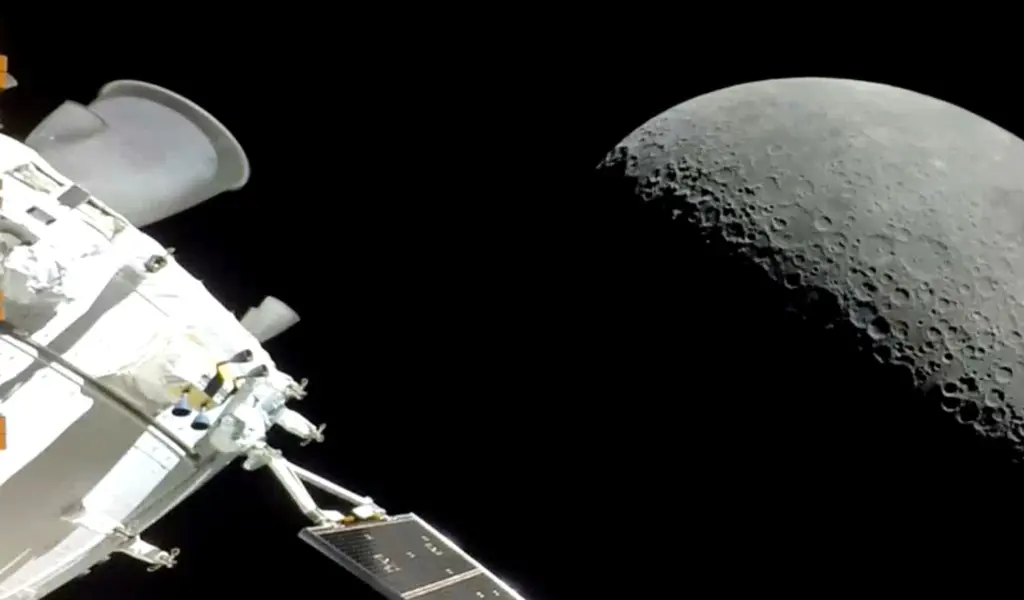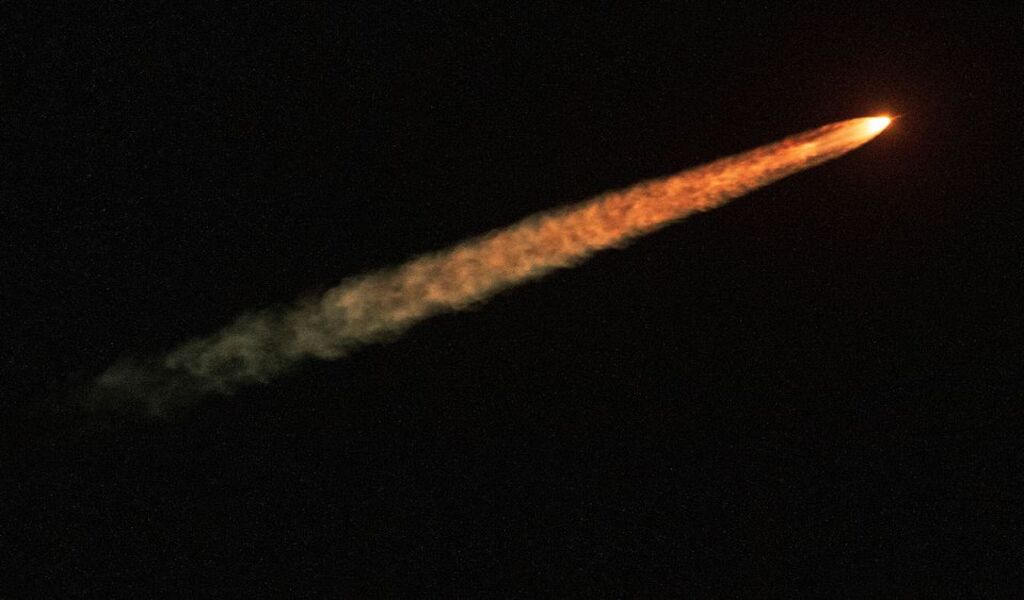Tech
NASA’s Orion Capsule Comes Closest To The Moon

(CTN NEWS) – NASA’s Orion capsule flew within 80 miles (130 km) of the lunar surface on Monday, making it the closest approach of a human-carrying spacecraft to the moon since Apollo 17 flew 50 years ago.
The capsule’s lunar flyby occurred a week after it reached its farthest point in space, nearly 270,000 miles from Earth, during its 25-day mission, according to the U.S. space agency.
.@NASA_Orion is only 687 miles above the Moon. #Artemis pic.twitter.com/a8nIvNX26U
— NASA Artemis (@NASAArtemis) December 5, 2022
In a “powered flyby burn” on Monday, Orion passed about 79 miles above the lunar surface as its thrusters changed the vehicle’s velocity and guided it back to Earth.
The 3-1/2-minute burn would mark Orion’s last major spaceflight maneuver before it parachuted into the sea and splashed down on Dec. 11.
LIVE NOW: Following today's close flyby of the Moon, our experts are giving an update on the #Artemis I mission.
The @NASA_Orion spacecraft is expected to splash down in the Pacific Ocean on Dec. 11. https://t.co/rQU7N7iUyk
— NASA (@NASA) December 5, 2022
It was 50 years ago this month that the final mission of the Apollo program, Apollo 17, carried Gene Cernan and Harrison Schmitt to the lunar surface in a spacecraft designed for human travel.
In total, 12 NASA astronauts walked on the moon during six Apollo missions between 1969 and 1972.
50 years ago today, @NASA’s #Apollo17 countdown clock started in preparation for the launch of the last crewed mission to the Moon. Let’s kick off our final #Apollo50th celebration with a #TriviaTuesday poll! ⬇️ pic.twitter.com/wieCP4rjqo
— NASA History Office (@NASAhistory) December 6, 2022
It flew farther than any previous “crew-class” spacecraft on the 13th day of its mission, despite having no astronauts aboard nearly 20,000 miles beyond the record distance set by Apollo 13 in 1970.
This was after it aborted its lunar landing and returned to Earth after a nearly catastrophic mechanical problem. It reached a point 268,563 miles from Earth.
Last month’s launch of Orion launched Apollo’s successor program, Artemis. This program aims to return astronauts to the moon and establish a sustainable base as a stepping stone to future Mars exploration.
As we prepare for future #Artemis missions, our astronauts aboard the @Space_Station are performing experiments that will lay the foundation of long-duration space travel.
Learn about the challenges and solutions our astronauts could help to address: https://t.co/ysDQEMv96X pic.twitter.com/zeB81ZSKbC
— NASA Artemis (@NASAArtemis) December 3, 2022
Upon completing the mission, Artemis II could fly around the moon and back in 2024, followed by Artemis III’s first lunar landing in a few years. Astronauts will take at least another decade and a half to reach Mars.
Debbie Korth, deputy manager for NASA’s Orion program, told reporters Monday that the spacecraft has exceeded all expectations.
NASA’s next-generation Space Launch System (SLS) rocket launched Orion from NASA’s Kennedy Space Center in Cape Canaveral, Florida, on Nov. 16.

NASA’s next-generation moon rocket, the Space Launch System (SLS) rocket with the Orion crew capsule, lifts off from launch complex 39-B on the unmanned Artemis 1 mission to the moon, seen from Sebastian, Florida, U.S. November 16, 2022.
Under contract with NASA, Boeing and Lockheed Martin Corp completed the first flight of the combined SLS rocket and the Orion capsule.
Orion’s inaugural flight will test the durability of its heat shield as it re-enters Earth’s atmosphere at 24,500 miles per hour, much faster than spacecraft returning from the International Space Station.
RELATED CTN NEWS:
Here’s What OpenAI’s New ChatGPT Bot Can Do





























